There’s nothing quite like the feeling of leather. It’s luxurious, sophisticated, and timeless. But what happens when leather gets wet? In this article, we’ll answer that question and provide some tips on how to protect your belongings from water damage. Leather is a beautiful material, but it needs to be properly taken care of in order to maintain its appearance and functionality. So read on for more information on what happens when leather gets wet!
How Water and Moisture Affect Leather
Leather is a natural material that is made from the skin of animals. It is treated with oils and waxes to make it more durable and water-resistant. However, this does not mean that it is indestructible. One of the ways that leather can be damaged is by exposure to moisture.
However, leather is not waterproof and will absorb water if left exposed to the elements. When leather gets wet, it can shrink, stretch, or change shape. The color can also fade or bleed.
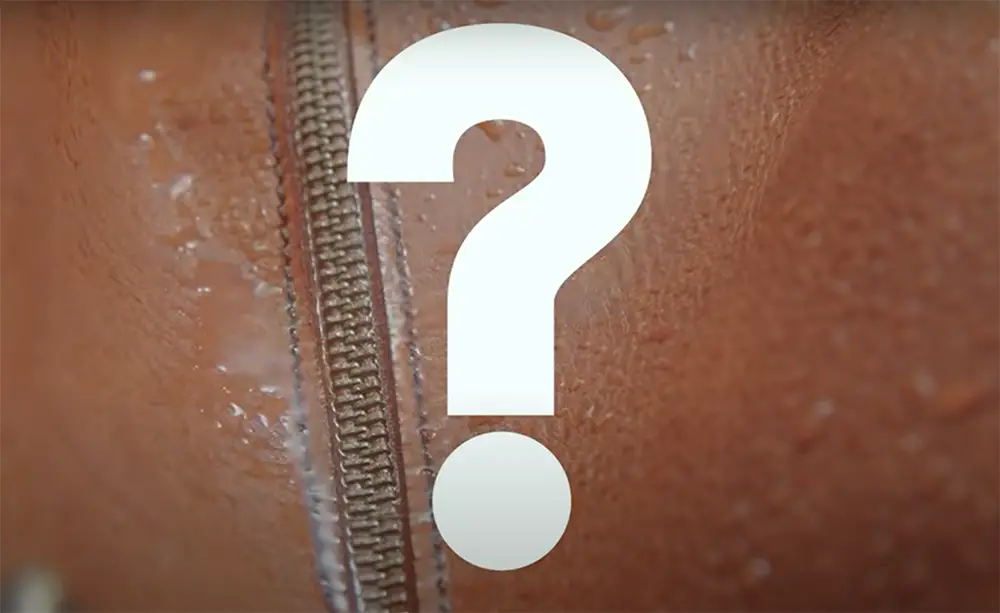
This is because water draws out the natural oils and fats from the leather, which causes it to dry out. If you don’t take care of wet leather, it will eventually crack and fall apart. And if you remove even the smallest water drops in time, they may soak into leather and leave unsightly water stains.
The type of damage will depend on how wet the leather gets and how long it stays wet. For example, if you get caught in a rainstorm with your leather jacket, it may only suffer from some water spots. But if you accidentally drop your leather bag in a puddle, it could be ruined. [1], [2]
Are All Leather Types Equally Vulnerable to Water?
No, not all leather types are equally vulnerable to water damage. Aniline leather, for example, is more susceptible to staining and discoloration than full-grain leather. Suede and nubuck are also more likely to suffer from water damage than other types of leather.
Vegetable tanned leather for example, is more resistant to water damage. This is because the tanning process makes the leather more rigid, which helps it retain its shape even when it gets wet. However, it is important to note that artificial leather is not completely waterproof and can still be damaged by exposure to water.
Most leather items also come with a protective layer that helps to repel water. But keep in mind that this layer can only protect from little water damage and may eventually wear off over time, which makes the leather more vulnerable to water damage. [3], [4], [9]
What to Do If Your Leather Item Gets Wet
Water can cause all sorts of damage to leather goods, but there are ways to protect your belongings from the elements. It’s vital to take action as soon as possible after your leather item gets wet.
Wash your hands
Gently wipe water and air dry the item
Use a clean, absorbent cloth to gently pat the wet leather dry. Do not rub the leather, as this can cause it to become misshapen. If the item is small enough, you can also blot it with a paper towel. However, be sure to use a lint-free paper towel to avoid leaving behind any fibers.
Do not use a hairdryer or other heat source to dry the leather, as this can cause further damage. Once you’ve removed as much water as possible, allow the item to air dry in a cool, well-ventilated area out of direct sunlight.
Once the item is dry, inspect it for any signs of water damage. If there are any cracks or creases in the leather, you may need to take it to a professional for repairs. Water can also cause the color to bleed or fade, so be sure to check for any discoloration.
If you’re drying a leather jacket, you should dry it by hanging it on a coat hanger. If you lay it flat to dry, the wet leather can lose its shape.
Apply leather conditioner on damp leather
While your leather item is still damp, you should apply a leather conditioner to help protect it from further damage. Leather conditioner will help to replenish the oils and waxes that have been lost due to exposure to water.
Be sure to follow the instructions on the leather conditioner carefully, as some products may need to be diluted before use. Apply the conditioner evenly over the surface of the leather and then allow it to air dry.
Buff the surface of the leather
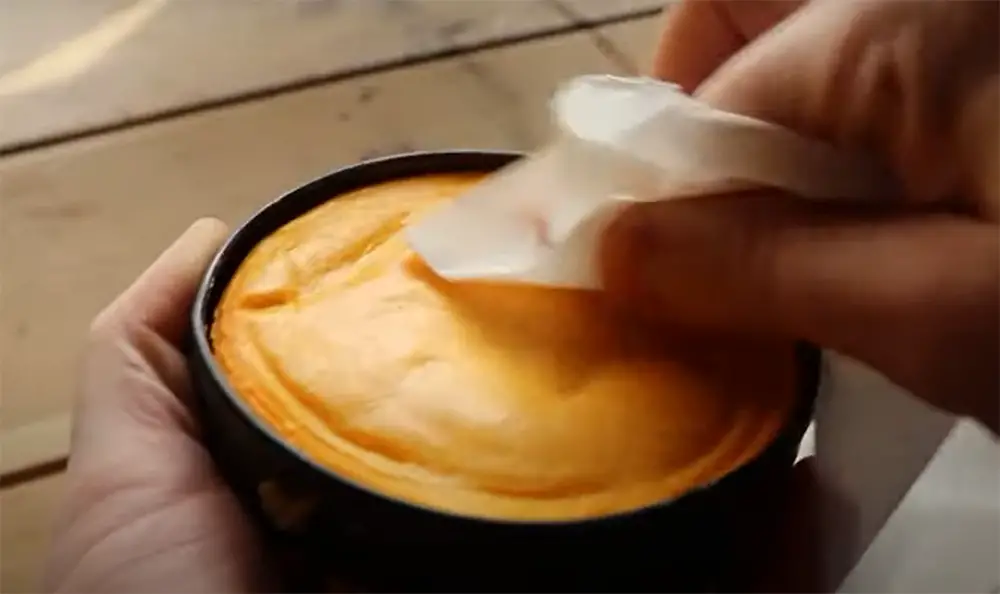
Once the leather conditioner has been applied and the item is completely dry, you can buff the surface of the leather to restore its shine. Use a soft, clean cloth to lightly rub the surface of the leather in a circular motion. This will help to remove any remaining water spots and give the leather a polished look. [1], [2], [5]
How to Dry a Soaked Leather Bag
If your leather item is wet on the inside, such as a wet leather bag, you need to take some extra measures besides the tips mentioned above.
First, empty the bag of any contents and then wipe all the metal hardware such as zippers or buttons. Next, stuff the bag with crumpled newspaper to help absorb the water and help the bag to maintain its shape.
You can also place the bag in a well-ventilated area to help speed up the drying process. [1], [2]
Drying Soaked Leather Shoes
Leather shoes can be difficult to dry without causing further damage. If your shoes are wet on the outside, you should first remove any excess water with a clean cloth. Next, if your shoes are wet on the inside, stuff them with crumpled newspaper and place them in a well-ventilated area to air dry. [1], [2]
Treating Water Stains on Leather
Cleaning vegetable-tanned leather
Vegetable-tanned leather is the most water-resistant type of leather. It is made by soaking the skin in tannins, which are derived from plant sources. This makes the leather more resistant to shrinking, stretching, and changing shape when it gets wet.
To remove a water stain you can use a compatible leather cleaner. Before treating the stain, test the cleaner on an inconspicuous area of the leather to make sure it won’t damage or change the color of the leather.
Dampen a clean cloth with the leather cleaner and gently rub the water stain in a circular motion. Wipe away any excess cleaner with a damp cloth and then allow the leather to air dry completely.
After you cleaned your leather item, apply some conditioner to help protect it from further damage. [2], [7]
Cleaning grained leather
Grained leather is also quite resistant to water damage. This type of leather is made from the strongest part of the animal skin, which has not been sanded or buffed to remove imperfections. The protective cover on the leather helps to repel water and keeps it from penetrating into the fibers.
You can clean grained leather in the same way as vegetable-tanned leather. Simply use a compatible leather cleaner and follow the instructions above. [2], [6], [7]
Cleaning Nubuck and Suede Leathers
Nubuck and suede are two types of leather that are particularly vulnerable to water damage. Nubuck is made from the top layer of the skin, which has been sanded or buffed to create a velvety surface. Suede is made from the underside of the skin, which is much thinner and more delicate.

Both nubuck and suede leathers should be treated with a water repellent spray before they are worn. This will help to create a barrier against moisture and dirt.
To clean nubuck or suede if the stain is fresh, start by using a soft cloth to dab away as much of the liquid as possible. Do not rub the stain, as this will only spread it and make it harder to remove. Once you’ve blotted away the excess liquid, use a soft-bristled brush to help the leather to regain its original shape.
Dry stains on these types of leather are much more difficult to remove. One method you can try is to dampen a lint-free cloth with distilled water and gently dab over the whole surface of the leather. This won’t remove the stain but will make the leather color look even. Then use a brush to rub the area in a circular motion. [2], [7]
How to Prevent Water Damage on Your Leather Goods
The best way to avoid dealing with water damage on your leather goods is to take preventive measures. Here are some tips to help you keep your leather belongings in good condition.
Store leather items in a cool, dry place
Exposure to sunlight and heat can cause the leather to become dried out and cracked. To avoid this, store your leather items in a cool, dark place such as a closet or drawer.
If you’re caught in a rainstorm, try to find shelter as soon as possible and take off any wet clothing items. Leather shoes can usually withstand getting wet more than once, but be sure to let them dry completely between wearings.
Condition your leather regularly
Leather needs to be moisturized in order to stay supple and soft. Use a quality leather conditioner at least twice a year, more often if the leather is exposed to sunlight or heat on a regular basis.
Apply beeswax cream
Beeswax cream can help to create a barrier against water and other elements. Simply apply a thin layer of beeswax cream to the surface of your leather goods using a clean cloth. Allow the beeswax cream to penetrate the leather for about 15 minutes before buffing it off with a soft cloth.
This treatment should be repeated every few months to help keep your leather goods in top condition.
Keep in mind that beeswax cream shouldn’t be used on suede and nubuck leather. Alternatively, you can treat these types of leather with a water repellent spray designed specifically for suede and nubuck. Follow the instructions on the spray carefully, as some products may need to be diluted before use. Apply the spray evenly over the surface of the leather and then allow it to air dry.
Wipe all the water excesses after cleaning the leather
Even the water used for cleaning the leather can damage it if not removed properly. Always remember to wipe all the water excesses after cleaning with a dry and soft piece of cloth. If you don’t have a piece of cloth, allow the item to air dry before storing it. [2], [7]
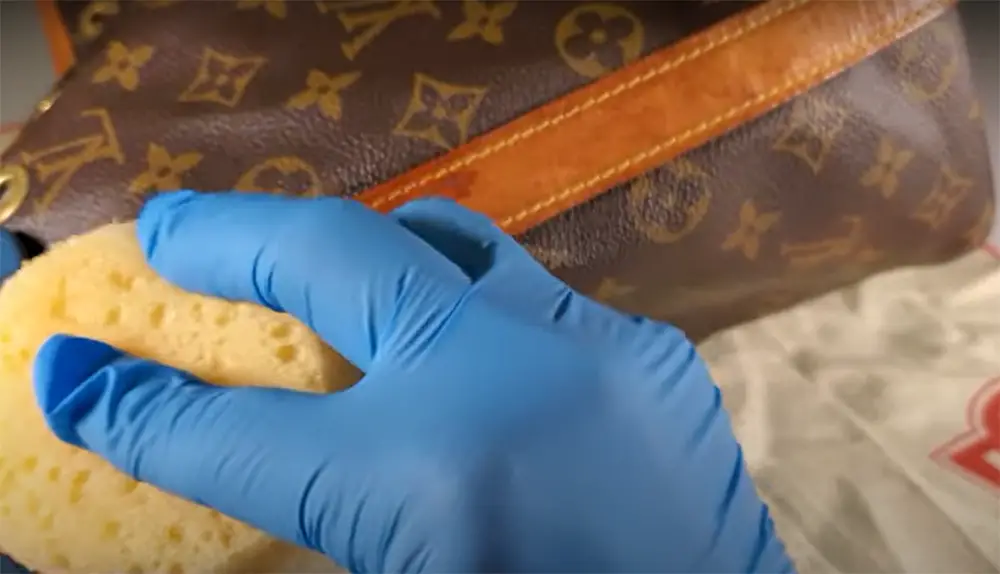
FAQ
Does leather react to water?
Leather is a natural product, and as such, it is porous. This means that it can absorb water and other liquids, which can cause staining and other damage. In addition, leather can also shrink or swell when exposed to moisture.
The leather also contains oils and waxes that can be washed away by water, which can make the leather dry and brittle.
How do you fix leather after it gets wet?
If your leather item gets wet, the first thing you should do is dry it off as much as possible with a clean, absorbent cloth. Once it’s dry, apply a small amount of leather conditioner to help keep the leather supple and prevent it from drying out and cracking. If the damage is severe, you may need to take your leather item to a professional for repair.
Can leather mold?
Leather can mold if it is not properly dried after getting wet. If you live in a humid climate, or if your leather gets wet frequently, it is especially important to take measures to prevent mold growth. Leather that has molded is often discolored and may develop a musty odor.
If you notice any mold on your leather goods, you should clean it immediately with a solution of water and vinegar. Scrub the affected area gently with a soft brush, then dry the leather thoroughly. If the mold does not come off easily, or if the leather is discolored or otherwise damaged, you should consult a professional cleaner.
Does getting leather wet ruin it?
It depends. If you’re caught in the rain, your leather coat or bag can take a beating. But if you carefully and quickly dry it off when you get home, it should be just fine. On the other hand, if you leave your leather wet for too long – say, days or weeks – it will start to lose its appearance.
Can you use a hair dryer to dry out wet leather?
You should not use a hair dryer to try to dry out wet leather. If your leather item is wet, it is best to allow it to air dry naturally. If you need to accelerate the drying process, you can place the item near a heat source (like a radiator).
However, be sure not to place the item too close to the heat source as this could also damage the leather.
How can you protect your leather furniture from getting wet?
Leather furniture should never be placed in direct contact with water. If your leather furniture gets wet, blot it dry with a soft, absorbent cloth as quickly as possible. Be sure to avoid rubbing the leather, as this can cause further damage.
You may also want to use a leather conditioner to help protect the furniture from future water damage.
Is it possible to restore a piece of leather furniture that has been water damaged?
It is possible to restore a piece of leather furniture that has been water damaged, but it will require some work and effort.
The first step is to make sure the piece is completely dry. If it’s not, use a blow dryer on the lowest heat setting to dry it out. Once it’s dry, you can begin to repair the damage.
You’ll need some leather restoration kits, which can be found at most hardware stores or online. The kit will include leather dye, a sealant, and a conditioner. First, dye the area that was damaged using the same color as the rest of the furniture.
Then apply a sealant over top and let it dry. Finally, apply a conditioner to help protect the leather.
What are some preventative measures that can be taken to protect leather from getting wet?
You can protect leather from becoming dry and cracked by applying a leather conditioner on a regular basis. Leather conditioners are available at most drugstores and department stores, and they come in both liquid and cream forms.
Leather furniture can be protected by making sure it is not exposed to direct sunlight for a long time. Sun makes the leather fade and also makes it brittle and cracked. Do not use harsh chemicals or solvents near leather furniture because these will also damage the material over time.
Does leather get ruined in rain?
The color of the leather depends on what kind it is. Vegetable-tanned leather is made from tanning animal skin with natural ingredients like tree bark. This is an old and traditional way to tan leather. It’s slow but results in a natural color and good water resistance.
Chrome-tanned leather is a type of leather that is tanned using chromium sulfate and other chemicals. This is the most common type of leather found in jackets, shoes, handbags, furniture and car upholstery.
Chrome-tanned Leather does not have good resistance to water, which can ruin it if it gets wet.
Does a little water ruin leather?
Rain can certainly ruin leather, but a little water won’t. In fact, if you’re careful, you can even clean leather with a wet cloth. However, it’s important to make sure that the leather is completely dry before you put it back in storage. Otherwise, the moisture will cause the leather to deteriorate and crack over time.
How do you dry leather quickly?
One way to dry leather quickly is to stuff the inside of the bag or briefcase with newspaper. The goal is to create as much insulation as possible so that the heat from your body will warm and dry the leather.
Another way to dry leather quickly is to use a hair dryer on low heat. Point the hair dryer at the wet leather from about six inches away, and keep moving it around so that it heats evenly. You may also want to try using a fan to speed up the drying process.
Does leather absorb water?
Yes. Leather is an absorbent material and will take on the characteristics of whatever it is exposed to, including water. This can be a good or bad thing, depending on what you’re using the leather for.
For example, if you’re using leather in a weatherproof application, such as boots or a coat, you’ll want it to be water resistant. Leather furniture and upholstery is a good choice for people who want furniture that can absorb moisture and smells. This is a good choice for people who drink coffee or wine often.
How long does leather take to air dry?
Leather can take up to 24-48 hours to air dry, but it is best to avoid direct sunlight and extreme heat, as this can damage the leather.
You can use a fan or hair dryer on a low setting to help speed up the drying process, but be careful not to overheat the leather. Once it is completely dry, you can then begin conditioning it with a leather conditioner.
Does leather need to be waterproofed?
Genuine leather is water-resistant, however, it is not waterproof. If the leather gets wet, it should be allowed to air dry and then conditioned with a leather conditioner.
Applying a waterproofing agent to the leather will stop it from breathing and can make the leather crack and become brittle.
Which type of leather is waterproof?
Semi-aniline leather is the best type of leather for making water-resistant items such as boots, bags, and coats. It has a protective finish that helps keep moisture out while still allowing the leather to breathe.
There are different types of leather. Some, like full aniline or nubuck, are not as resistant to water and should only be used for items that will not be exposed to wet weather often.
For example, aniline leather is often used for upholstery because it is soft and luxurious, while nubuck is a good choice for shoes because its nap gives them a suede-like appearance.
Why does leather shrink when wet?
Leather is made from the skin of an animal. The hide is soaked in a lime solution to remove the hair and then it is treated with chromium salts to make it more water resistant.
If leather gets wet, the chromium salts in the leather will react with the water and create a white film on the surface. This film will make the leather shrink and become stiff. The film can be removed by rubbing it with a cloth or by brushing it with a horsehair brush.
Useful Video: Does Water Ruin Leather – how to care for wet leather
Conclusion
So, what happens when leather gets wet? You now know the consequences of water exposure – it can make your leather stiff and dry, and it can also cause unsightly staining. In some cases, this damage may be irreversible. However, if you take precautions to protect your leather from getting wet in the first place, you can avoid these problems altogether. For example, using a good quality leather conditioner will help keep your leather items looking great for years to come.
References:
- https://steelhorseleather.com/blogs/the-journal/does-water-ruin-leather
- https://vonbaer.com/blogs/blog/what-happens-when-leather-gets-wet-how-to-fix-it
- https://www.fibrenew.com/blog/how-to-fix-and-prevent-water-damage-to-leather/
- https://vonbaer.com/blogs/blog/what-happens-when-leather-gets-wet-how-to-fix-it
- https://buffalojackson.com/blogs/insight/what-to-do-when-leather-gets-wet
- https://mahileather.com/blogs/news/full-grain-leather-what-how-and-why
- https://www.carlfriedrik.com/blogs/magazine/wet-leather-guide
- https://leatherhero.com.au/uncategorized/how-to-clean-condition-aniline-leather/

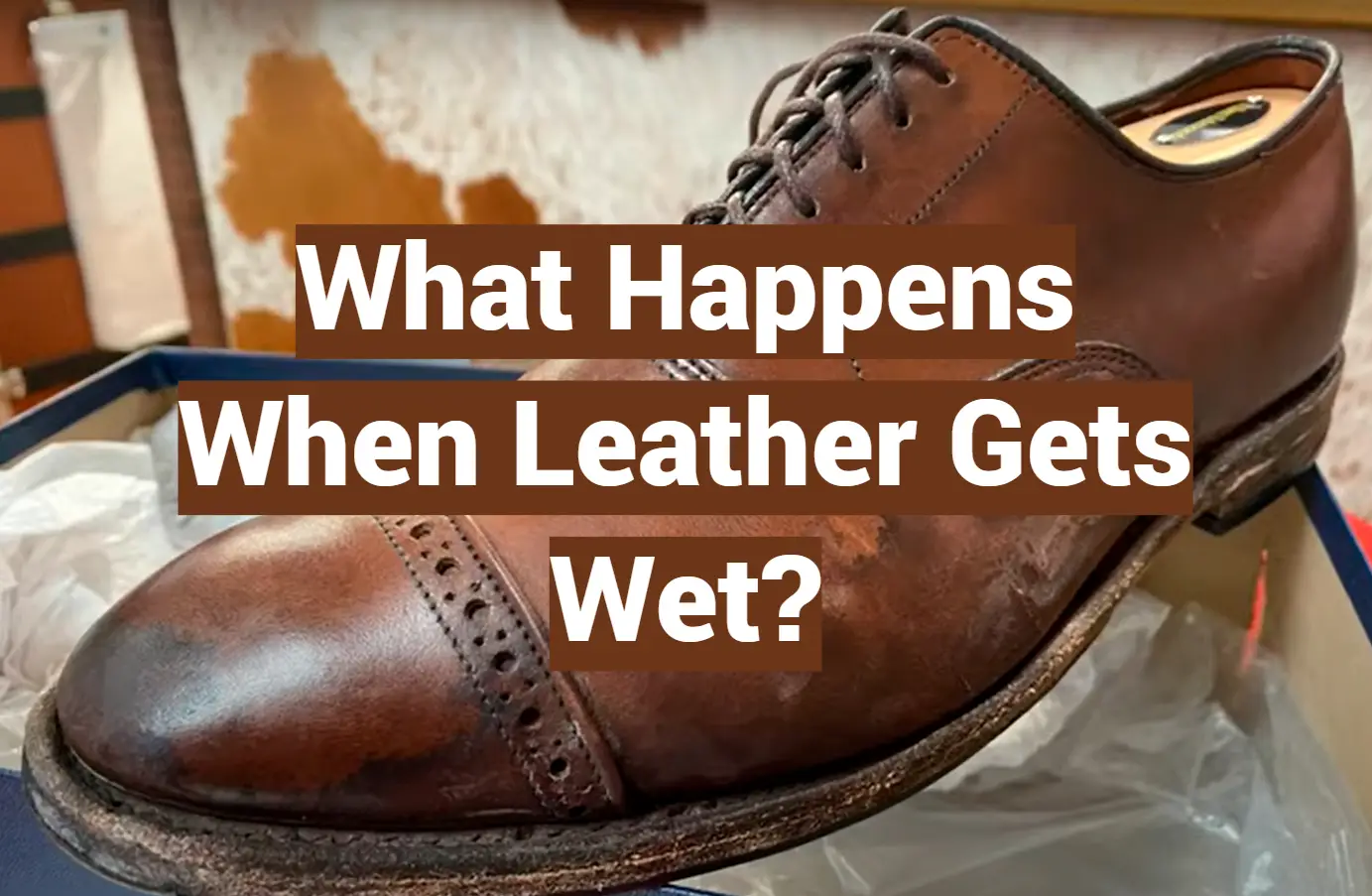
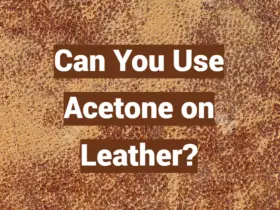


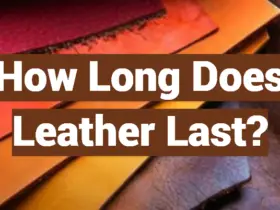

Leave a Reply